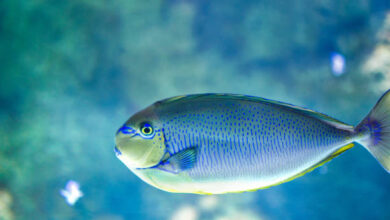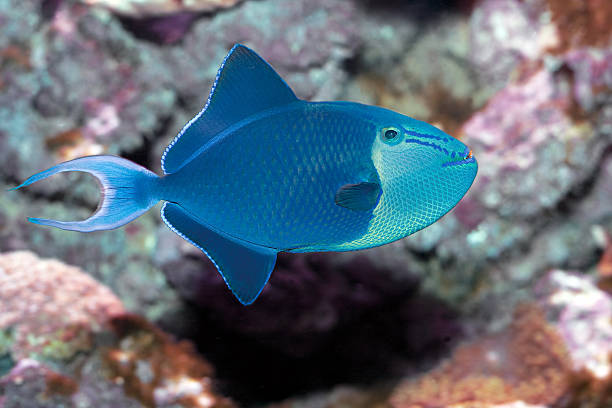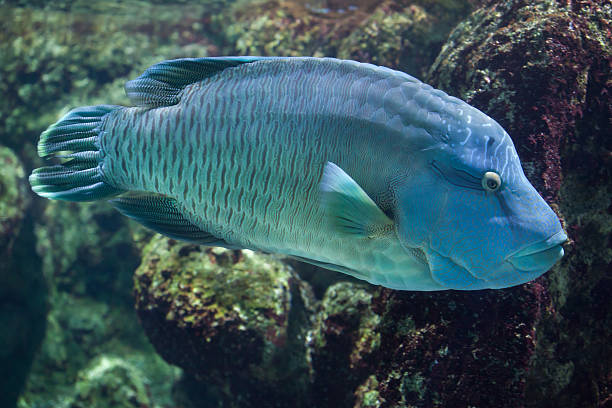Are perch ray-finned or lobe-finned fish
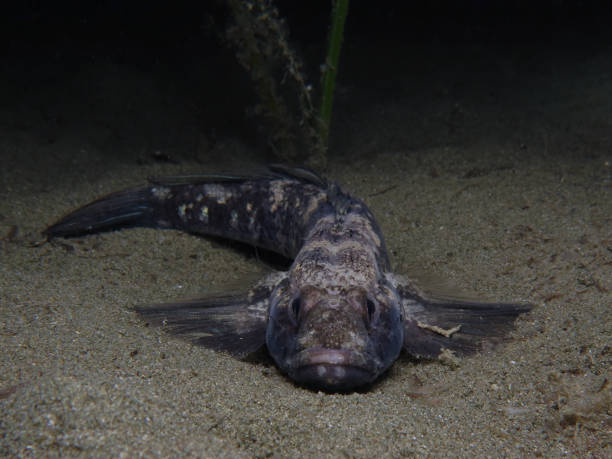
For many fish aficionados and marine biologists alike, the subject of whether perch are ray-finned or lobe-finned fish has been intriguing. As we work to find the solution, we’ll examine the distinctive qualities that distinguish different fish species and provide insight into the special traits, ecological significance, and diversity of perch.
Recognizing the Distinctions Between Lobe- and Ray-Finned Fish
In order to clarify the issue of whether perch are lobe-finned or ray-finned, let’s first delve into the intriguing field of fish anatomy and see what makes these two classifications different. Actinopterygii, the scientific name for ray-finned fish, are distinguished by their fins. Imagine a fan, with its widely spaced spines holding up cloth; that is exactly how the fins of a fish with rays function. They get their name from their descriptive web of skin held aloft by bony or spiky rays.
On the other hand, lobe-finned fish are a totally different animal! These fish, called Sarcopterygii, have fins that resemble limbs more than normal fish fins. Like our arms or legs, they have a primary bone structure that branches out into smaller bones, and this is covered in a thick layer of muscle and skin. Lobe-finned fish have more range of motion in the water because to this interesting structure.
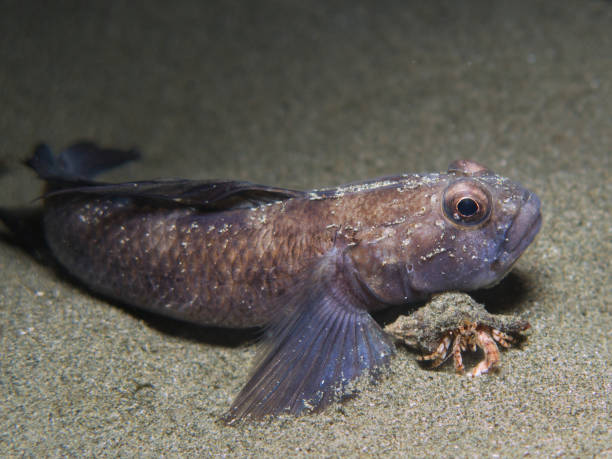
Although they may have a distinctive name, lobe-finned fish are only a small portion of the fish family; ray-finned fish are the dominant species.
The ray-finned group of vertebrates is the largest and most diversified on the planet, with over 30,000 species of fish. The range of shapes, sizes, and colors is encompassed by the extensive classification. But those complex, spiny-rayed fins are the one characteristic that unites all of the members.
We’ll explore the unique traits of perch in the sections that follow, providing context for their classification as ray-finned fish and emphasizing their role in maintaining aquatic ecosystem health and biodiversity. So tune in as we go deeper into the aquatic realm of perch!
The true attraction is in the diversity and dominance of ray-finned species, such as the perch, rather than the intriguing complexity of lobe-finned fish. These fish are experts of their aquatic habitats due to a variety of adaptations.
For example, the delicate, ray-like shape of perch fins allows for quick navigation in a variety of water conditions, in contrast to the limited mobility of lobe-finned fish.
Their habitats benefit greatly from their robust population, which is a result of their anatomical advantage and the vast range of species that they inhabit. Because they are more common than lobe-finned fish, which are rare, perch and other ray-finned fish contribute to the delicate balance that exists in marine ecosystems.
We’ll go into more detail about how the perch’s distinct physical traits allow it to survive in its aquatic habitat next. Unlike lobe-finned fish, perch are adaptable survivors that use their unique fins for accurate swimming and foraging. Indeed, they have made use of their unique anatomical features to their advantage.
Perch: Recognizing Their Tails, ray-finned
For a moment, picture yourself as a perch, maybe sliding across a freshwater pond or river. Turn your attention to its fins now. The amazing, adaptable appendages on the perch are not merely ornamental; they are unmistakable indicators that it is a ray-finned fish. The dorsal fin is an interesting example of a form and function combined, as it sits above the perch like a crest. It is basically split into two portions, each of which has a distinct function in the perch’s existence.
Sharp, prickly rays adorn the forward part, resembling the armor of a knight rather than the fin of a fish. The frightening spikes on this part of the perch serve as a defense against potential predators. Most dangers will be deterred from trying to consume this watchful swimmer after taking one glimpse at these protective spines.
Proceed to the dorsal fin’s posterior region to observe an alternative tale. This region functions as an internal stabilizer because it is made up of softer, more flexible rays. This portion of the fin provides stability and mobility, enabling the perch to move with grace and agility as it darts after a possible food or threads among aquatic plants.
What distinguishes ray-finned fish from their lobe-finned cousins is the combination of softer, flexible rays in the back and robust, spiky rays at the front. Remember this the next time you see a perch showing off its dorsal fin: it’s an evolutionary signal that says,
“I am a ray-finned fish, a member of the largest group of vertebrates on Earth.”
Take a moment to appreciate the beauty of the feature as well as its evolutionary significance. Furthermore, I represent a significantly wider variety of species and habitats than lobe-finned fish do. Our fins bear tiny evidence of our differentiation, which is a monument to the amazing power of evolutionary adaptation.
In fact, ray-finned fish, like perch, are remarkably adaptable and may be found in almost any aquatic habitat, whereas lobe-finned fish are mainly limited to particular niches. It’s an exciting display of evolution and a crystal-clear reminder of how modifications can provide species substantial advantages in the fight for existence.
Lobe-finned fish, despite its small number, set the stage for a major evolutionary leap: the move to terrestrial life. However, the most adaptive species that have mastered the aquatic environment are the enormously diversified ray-finned fish.
Lobe-finned fish provided the evolutionary foundation for tetrapods, or animals with four legs, even as they made the shift to terrestrial existence. These two fish groups’ diversity and flexibility serve as an excellent example of how evolution is dynamic.
Categorization and Variability of Perch, ray-finned
A detailed examination of the perch family tree reveals a vast and incredibly diverse group of species. About 200 species of perch, which are found on the continents of North America, Europe, and Asia, are members of the Percidae family. Their shared trait—belonging to the ray-finned fish clan—keeps them together despite their disparate geographic locations.
Traveling through the diverse habitats that these perch occupy, you would come across an amazing array of animals. Maybe you would encounter the colorful darters, little and vivacious, showing a variety of hues. Alternatively, you can come across the larger and more predatory walleye or yellow perch that are hiding in the depths.
These various species add to the great biodiversity of their own environments, each with its own special adaptations and habits. They are intriguing examples of the evolutionary paths pursued by this diverse group of vertebrates and a monument to the adaptability of the ray-finned fish.
But their amazing diversity doesn’t take away from their shared ancestry.
These perches all have the same characteristic, even if they range in size, environment, and color. With their bony ray fins, they are securely anchored in the world of fish with ray fins. Therefore, keep in mind that all fish swim under the same ray-finned banner, whether you’re observing a walleye hunt in a European lake or appreciating a small darter in a North American stream.
And that’s a really amazing aspect of the natural world, my friend! However, there’s more. If you delve deeper, you may come across lobe-finned fish, a relative of the ray-finned family and a special branch in the family tree that gave rise to the first land-dwelling vertebrates. Yes, the lobe-finned fish that paved the path for the emergence of terrestrial life did travel from the ocean to land, armed with sturdy bones and fleshy, rounded fins.
Their descendants, who have undergone more than 400 million years of evolution, include mammals, birds, reptiles, and even us humans! The transition of our progenitors, the lobe-finned fish, from water to land represents a remarkable advance in the development of life on Earth. The enormous diversity of land-dwelling animals that we observe today was made possible by these fish.
Distinctive Features of Perch, ray-finned
Examining more closely, there are a few unusual characteristics that set these swimmers with ray-like fins apart from their aquatic counterparts. The perch stands out in the underwater environment due to a few other features in addition to its distinctive fin construction.
First, let’s talk about their impressive dental apparatus. The perch has fangs that are ferocious and sharp, so it’s more than just a gorgeous face. The perch’s status as a prominent predator in many aquatic habitats is confirmed by these formidable teeth, which serve as effective instruments for grabbing and consuming smaller fish.
Next up, let’s examine the perch’s nimble body. This feature isn’t just for show. The perch’s streamlined form enables them to move quickly and precisely across their aquatic surroundings. These swimmers with ray fins are experts at maneuvering; they are as fast as a dart and as nimble as an acrobat. In their natural environments, their tremendous hunting skills are complemented by their agility and quickness.
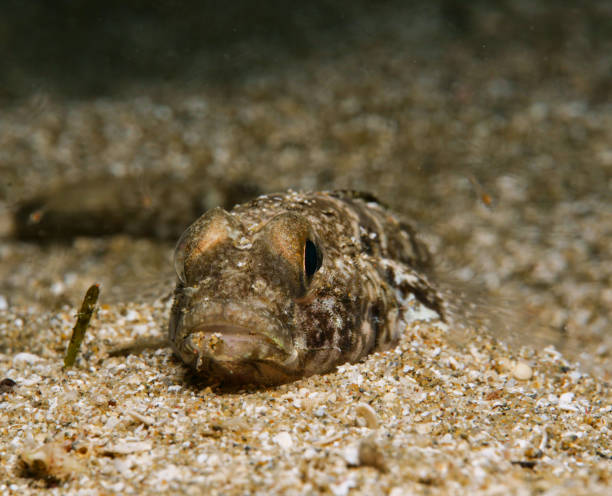
Let’s add color to the scene now. For those who value the beauty of nature, perch are a visual feast as well as a delight for ichthyologists.
Perch has a color scheme that varies from gold and yellow to dark green. Several species even have eye-catching, dark vertical bands on their bodies. Their unique coloring contributes to their attraction and has a functional use. It gives them a natural camouflage that protects them from both predators and prey by blending them into their environment.
Thus, the perch offers a fascinating window into the world of ray-finned fish because to its unique colors, swift movements, and predatory skills. Not only are they amazing to watch, but they also offer a window into the various adaptations and survival techniques these organisms use in the ever-changing aquatic environment.
Perch’s Function in Ecosystems, ray-finned
Not only are perch fascinating to see, but they are also the actual superheroes of the water. Perch, with their fixed place at the base of the food chain, are essential to maintaining the equilibrium of ecological scales. They fine-tune the populations of smaller fish and invertebrates that fall within their sphere of influence, like a well-oiled machine in the water. They prevent these tiny intruders from taking over their habitats with a single snap of their raptorial jaws.
However, it goes beyond simply controlling the numbers. Larger fish, birds, and mammals can feast on perch themselves, which makes a substantial contribution to the food chain. It’s a striking illustration of how aquatic ecosystems are cyclical environments where every organism plays a vital function.
The function of perch as water sentinels is arguably one of their most fascinating characteristics.
Comparable to the adage “canary in a coal mine,” perch are extremely sensitive to environmental changes, especially contamination of the water.
A decrease in perch numbers frequently indicates that an ecosystem is in trouble, informing ecologists and conservationists about possible environmental problems. They serve as our underwater eyes and ears, providing us with important information on the condition of their habitats.
Thus, perch make a significant contribution to the health and resilience of aquatic environments. They actively contribute to maintaining their aquatic environments rather than just being residents of them.
Thus, the next time you see a perch dashing through the water, stop and consider its dual roles as an important member of the fish’s ecological community and as a stunning example of a ray-finned fish. Recall that each perch has a purpose and is a monument to the complex web of life that exists beneath the surface of the water.
